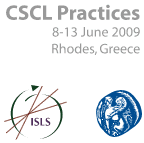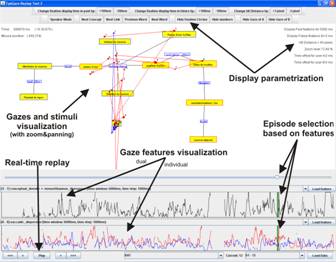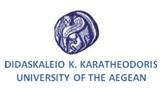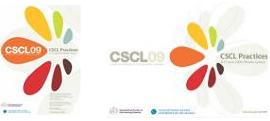
Program
Pre-Conference Events Program
Tutorial:
Collecting and Analyzing Gaze Data from Collaborative Interaction
Patrick Jermann, Marc-Antoine Nüssli, Centre de Recherche et d’Appui pour la Formation et ses Technologies (CRAFT), Ecole Polytechnique Fédérale de Lausanne (EPFL), station 1, CH-1015 Lausanne
Email: Patrick.Jermann@epfl.ch, Marc-Antoine.Nuessli@epfl.ch
Tutorial content
Eye tracking provides valuable information to better understand how learners use CSCL systems. The simplest application of eye-tracking consists of recording when and how often learners focus their gaze on a particular area of interest. For example, do they look at a knowledge awareness tool while composing or when receiving a message? Which sentence openers do they look at most in a semi-structured discussion tool? A technically more challenging approach consists of capturing gaze when learners construct an artifact (e.g. a concept map), or when the scene is dynamic (e.g. Tetris). In this case the areas of interest are mobile and need to be recorded in parallel to gaze. Several popular CSCL applications correspond to this case, e.g. chat tools, forum threads, and graphical discussion tools. Finally and most complex, dual eye-tracking consists of simultaneously recording gaze from two collaborators working on a shared task.
This new methodology offers promising insights into the interaction processes during collaboration. In this tutorial, we propose to address the methodological challenges inherent to the three types of gaze data collection and analysis. Standard analysis and replay software which usually come with eye-trackers are intended to visualize individual activity only. We propose to introduce participants to the challenges of recording and analyzing through hands-on activities with a replay tool that we developed to visualize and explore quantitative indicators related to collaborative gaze (Figure 1).

Figure 1. Illustration of the Replay-Tool integrated in the framework.
Tutorial format
The tutorial mixes presentations and hands-on activities. 1) Introduction to the experimental setup required to record data. 2) Exploration of diverse gaze records with the replay tool 3) Presentation and discovery of different quantitative indicators computed by the replay tool (divergence, co-occurence, dispersion, etc), 4) Advanced use of the replay tool based on gaze features. Researchers already active or planning to start in this field will get an opportunity to discuss how they could use and extend the replay tool developed by the organizers. This could be the starting point for the development of an active community of researchers on gaze in collaborative situations.
Special procedures
Participants who already have gaze recordings in a collaborative situation are invited to contact the organizers by April 3rd to assess whether their data can be used during the tutorial. Participants who do not have their own data will be able to use the organizers' data sets (Collaborative Concept Mapping, Collaborative Tetris, Collaborative Raven Matrices).
Tutorial Date: Tuesday, June 9th, 2009
.
.
.
.
.
.











